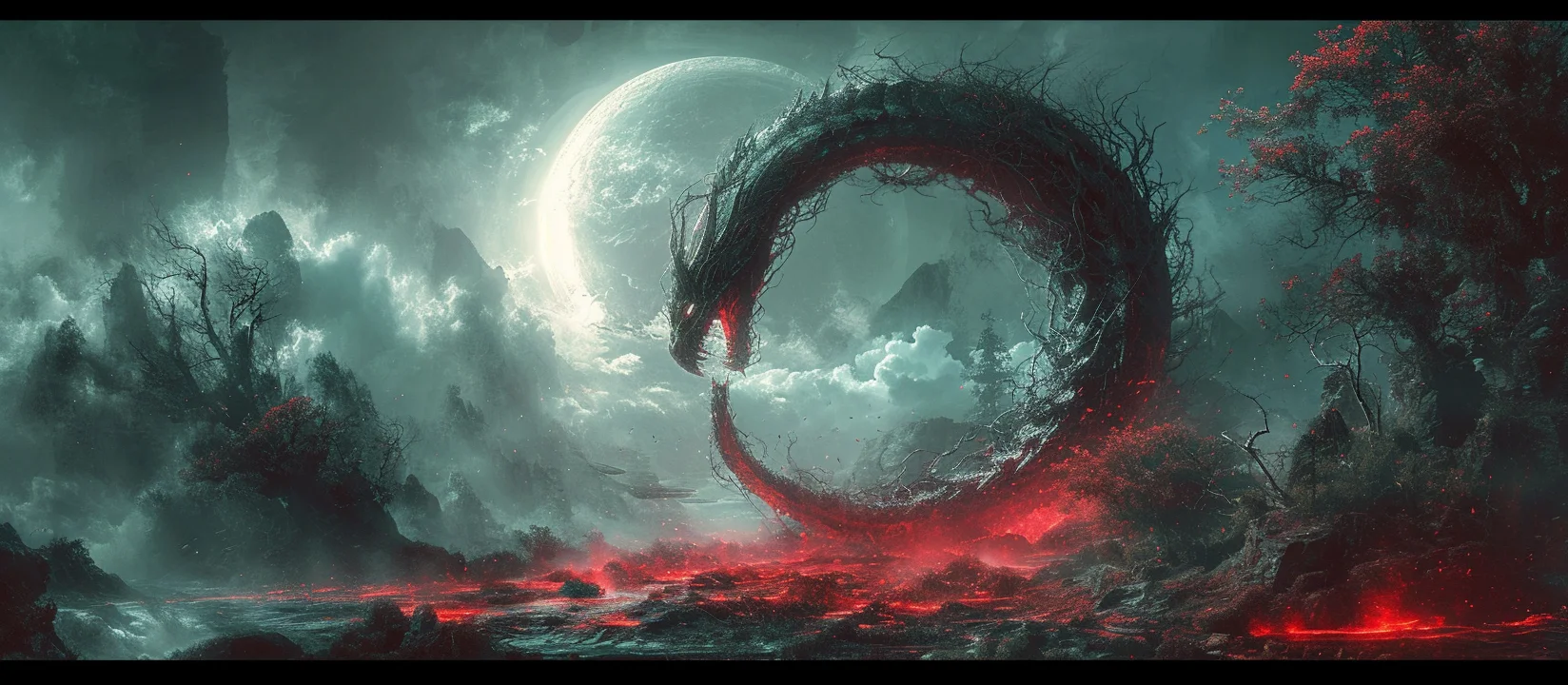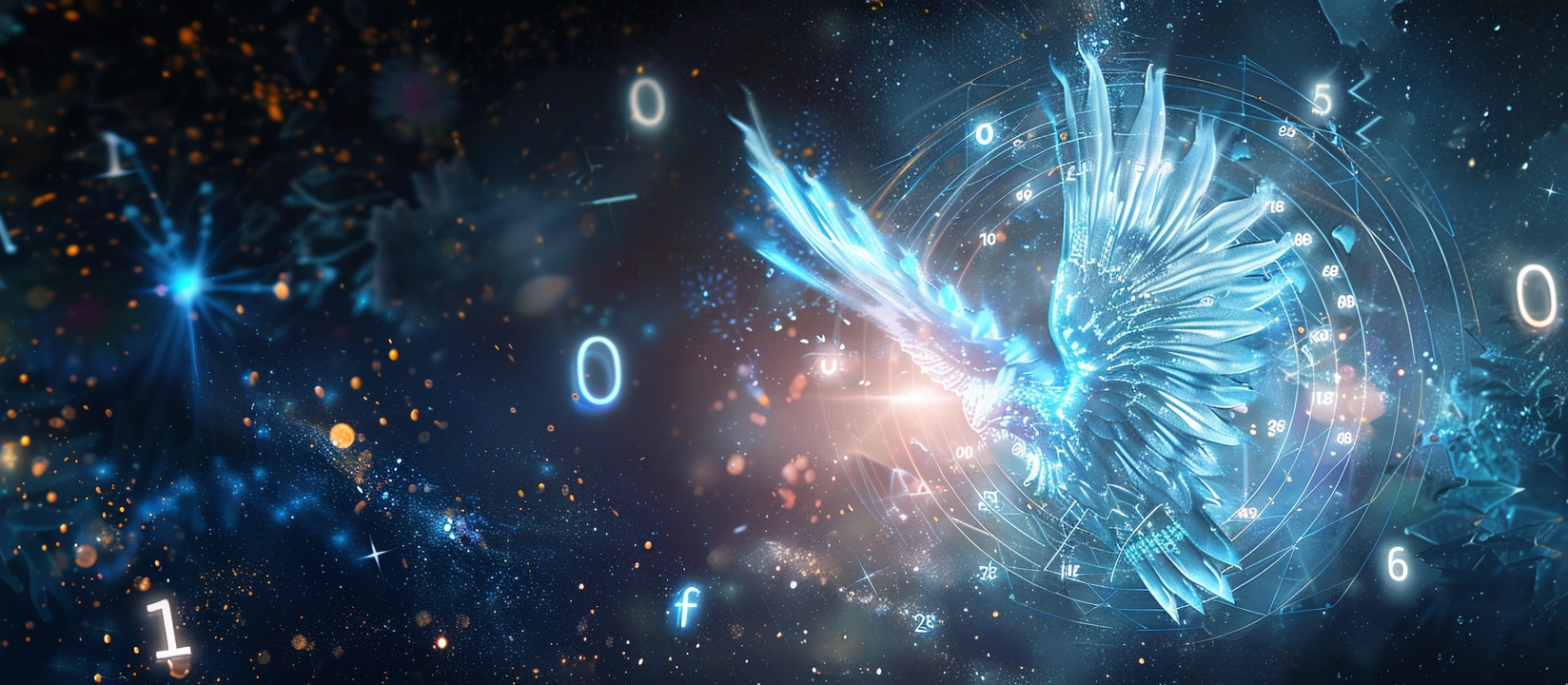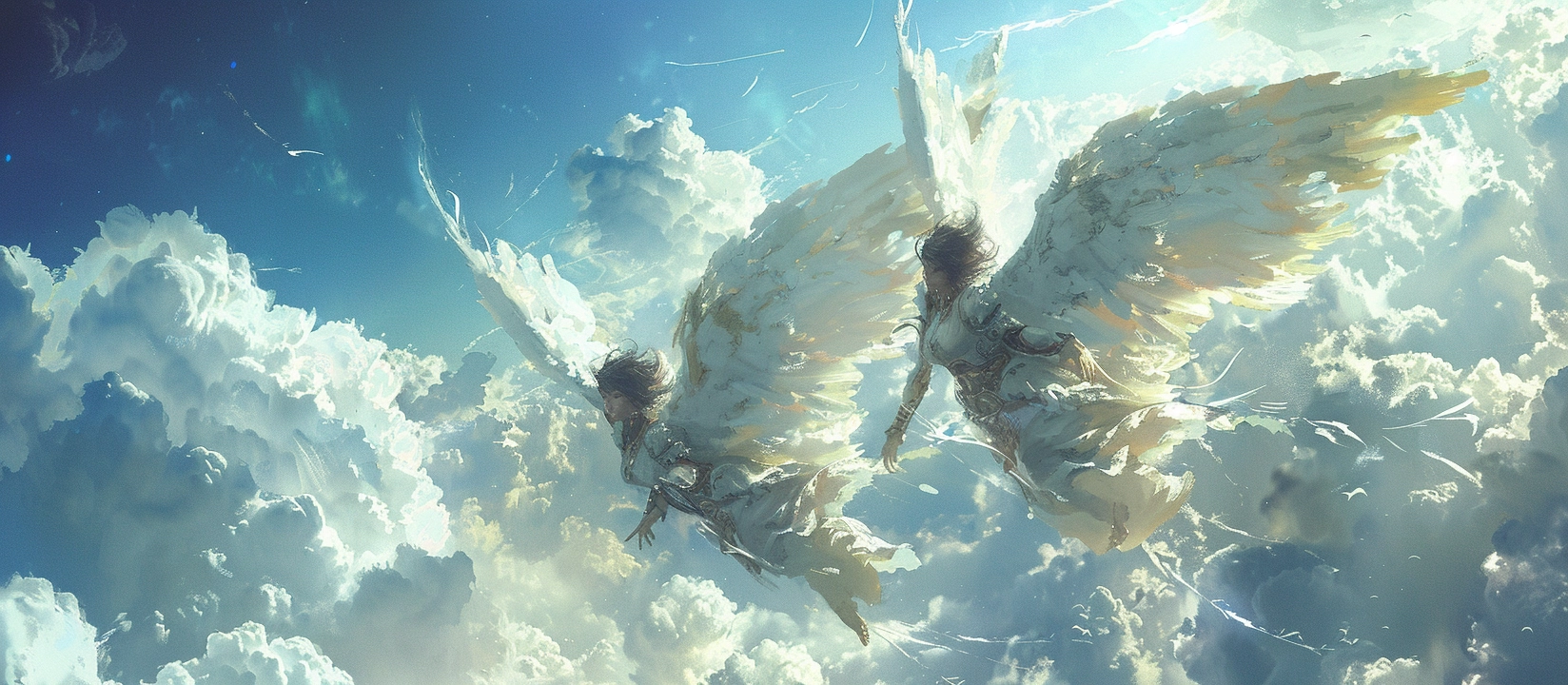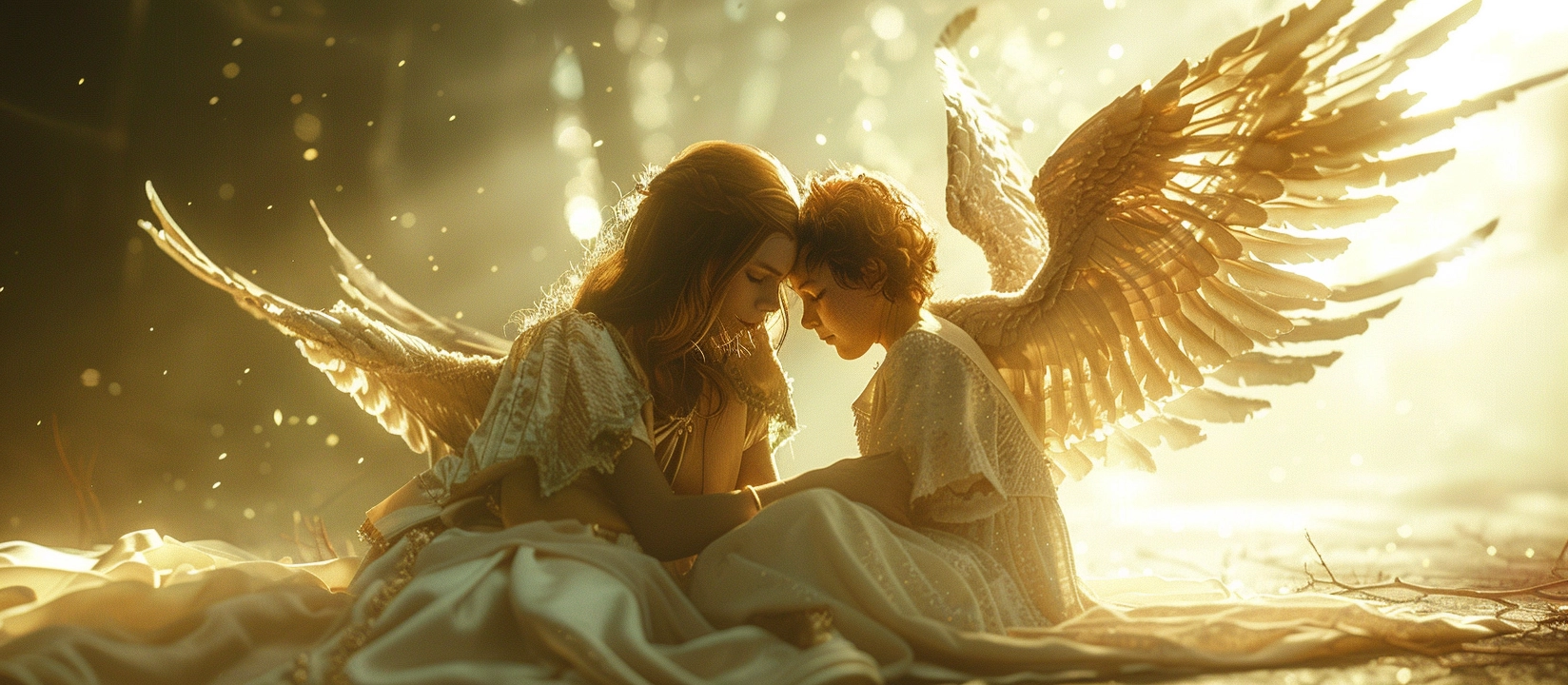Your cart is currently empty!
Have you ever felt mesmerized by the mystery of ancient symbols? The image of snake that eats itself by the tail might have caught your eye, triggering questions about what such a curious symbol could mean.
This enigmatic figure, known as the Ouroboros, has slithered through various cultures and time periods, leaving a trail of philosophical and spiritual wisdom in its wake.
Did you know that this powerful emblem represents more than just a self-eating creature? It’s loaded with meanings related to life’s endless cycle and nature’s eternal rhythm. Our journey into the world of the Ouroboros will unwrap these mystical layers for you, offering insights into how this ancient icon can illuminate truths about infinity, unity, and regeneration.
Dive in as we reveal secrets hidden within the coils of this timeless symbol! Ready to discover an ancient key to understanding life’s greatest mysteries? Keep reading!
Table of Contents
Ouroboros Meaning and Exploring the Concept
The Ouroboros, a symbol of a serpent or dragon eating its own tail, has been interpreted and represented in various forms throughout history. It holds significance in Indian thought and has been referenced in modern context as well.
Name and interpretation of Snake That Eats Itself
“Ouroboros” means a snake that eats its own tail. This image shows a circle that stands for things like time going on forever and life starting over and over again. People see the ouroboros as something powerful because it can make itself live forever without needing anything else.
This symbol speaks to how everything is part of a big loop where endings lead to new beginnings. It makes us think about life, death, and coming back in new ways. For many seeking spiritual truths, the ouroboros gives hope and reminds them that every end might be just a start of something else.
Historical representations
The Ouroboros is a symbol that has appeared in various ancient cultures, including Egyptian, Norse, and Hindu mythologies. In Egyptian mythology, it represents the sun god Ra as he travels through the underworld at night to emerge again at dawn.
This symbolizes the cyclical nature of life and death. In Norse mythology, the Ouroboros appears as Jormungandr, also known as the Midgard Serpent, which encircles the world and grasps its tail.
This depiction illustrates how everything is connected within the cosmos. In Hinduism, the Ouroboros is linked to Ananta Shesha, the serpent upon which Lord Vishnu rests between cycles of creation.
Connections to Indian thought
The Ouroboros symbol has connections to Indian thought through its association with Hinduism and the concept of time as cyclical. In Hindu philosophy, the snake eating its own tail represents the idea of eternal renewal and continuous cycle of creation, preservation, and destruction.
This aligns with the Ouroboros symbol’s representation of infinity and the cyclical nature of life. Furthermore, in Hindu mythology, snakes are often depicted as powerful divine beings, adding spiritual significance to the symbolism of the Ouroboros within Indian thought.
The concept of rebirth and immortality associated with the Ouroboros also resonates with Indian beliefs in reincarnation and liberation from the cycle of birth and death (samsara).
The idea that everything is interconnected and unified, as expressed by the Ouroboros symbol, finds parallels in Advaita Vedanta philosophy which emphasizes non-duality and oneness.
Modern references
The Ouroboros holds deep spiritual meaning and continues to resonate in modern times. In contemporary culture, the symbol is often used in literature, art, and popular media as representation of eternity, cyclicality, and interconnectedness.
Its presence in literature reflects its enduring relevance as a motif that transcends time and culture. Moreover, the Ouroboros has become a popular tattoo design for individuals seeking to convey profound concepts such as infinity or the circle of life through body art.
In addition to this cultural impact, the Ouroboros has also found significance within scientific discussions around themes of self-destruction and renewal. These modern references demonstrate how the symbolism of the Ouroboros continues to captivate people across different realms – from spirituality to science – making it an enduring emblem with diverse layers of significance.
Symbolism of the Ouroboros
The Ouroboros represents infinity and eternal renewal, as well as the concept of primordial unity. To learn more about the deep symbolism of this ancient symbol, keep reading!
Infinity and eternal renewal
The Ouroboros symbolizes endless renewal and the infinite nature of existence. It represents the cycle of life, death, and rebirth, showing that everything is connected in an eternal loop of continuity.
This concept reflects the spiritual idea that there is no true beginning or end but rather an ongoing process of perpetual renewal.
The Ouroboros embodies the timeless understanding that all things are interconnected and continually rejuvenating. Its symbolism conveys a profound message about the everlasting nature of life and the perpetuity of existence, resonating deeply with those seeking spiritual insight and meaning in their lives.
Primordial unity
The concept of primordial unity is deeply embedded in the symbolism of the Ouroboros. It represents the idea that everything in the universe is interconnected and interdependent, reflecting a sense of oneness and completeness.
This ancient symbol reminds us that all things are part of a unified whole, emphasizing the eternal cycle of creation, destruction, and rebirth. The Ouroboros embodies the notion that we are not separate from nature or each other but are intrinsically linked, creating a profound understanding of harmony and balance within the cosmos.
Cultural Symbolism of the Ouroboros
Explore the significance of the Ouroboros in Egyptian mythology, alchemy, Norse mythology, and Hinduism to gain a deeper understanding of its cultural symbolism. Ready to dive into the fascinating world of spiritual symbolism? Keep reading!
Egyptian mythology
In Egyptian mythology, the Ouroboros symbol represents the concept of time and continuity. The ancient Egyptians believed in cyclical nature of life, death, and rebirth, which is embodied by the Ouroboros.
This symbol was associated with the sun god Ra, as it reflects the daily journey of the sun across the sky and its renewal each morning. The Ouroboros also signifies immortality and eternity in Egyptian culture.
Moving on to “Alchemy,” this ancient practice also held deep symbolism related to spiritual transformation and self-discovery.
Alchemy
Alchemy, an ancient practice blending science and spirituality, holds the Ouroboros symbol in high regard. This symbol represents the cyclical transformation of matter and spirit, a core concept in alchemical tradition.
The Ouroboros’s depiction embodies the idea of unity, eternity, and the continuous process of creation and destruction. Alchemists see the snake consuming its own tail as a metaphor for eternal renewal and the synthesis of opposites into harmonious balance.
They believe that through this symbolism, they can understand the interconnectedness of all things in both physical and spiritual realms. It serves as a powerful representation of wholeness and infinite potential within each individual.
Norse mythology
Transitioning from the mystical symbolism of the Ouroboros in alchemy to its significance in Norse mythology, we find that the serpent Jörmungandr is a powerful representation of this concept.
In Norse mythology, Jörmungandr is depicted as a giant sea serpent encircling the earth, biting its own tail. This portrayal symbolizes the cyclical nature of life and death, reflecting how existence perpetually revolves around itself.
As an emblem of eternal renewal and connection to the cosmos, Jörmungandr embodies the timeless themes that resonate deeply within Norse mythological beliefs.
Hinduism
In Hinduism, the ouroboros is connected to the cycle of creation and destruction. This symbol represents the eternal nature of existence and is linked to the concept of time as cyclical rather than linear.
In Hindu thought, the snake eating its own tail signifies the continuous renewal and regeneration within the universe, emphasizing the interconnectedness of all living beings and elements in creation.
The symbolism of the ouroboros in Hinduism reflects themes of eternity, unity, and cosmic order that are integral to spiritual understanding.
Scientific Explanations for Snake That Eat Itself

Some scientists believe that snakes may eat themselves when experiencing trauma or distress, while others suggest that they might mistake themselves for prey. These scientific explanations could provide interesting parallels to the symbolism of the Ouroboros in mythology and spirituality.
Trauma and distress
Trauma and distress that causes snakes to eat themselves can stem from a variety of factors. In captivity, stress due to confinement or inadequate living conditions can lead some snakes to self-harm behaviors like eating their own tails.
Additionally, illness or injury could prompt this unusual behavior as well. Furthermore, hunger might drive a snake to attack itself if it mistakes its own tail for prey, especially when food is scarce.
This offers an interesting perspective when considering the symbolism of the Ouroboros in various cultures and spiritual beliefs.
The concept of trauma and distress causing a snake to eat itself aligns with the idea of cycles of destruction and renewal that the Ouroboros represents in different mythologies and spiritual traditions.
Mistaking themselves for prey
While trauma and distress may explain a snake’s self-destructive behavior, another reason for this action could be mistaking themselves for prey. When snakes are under stress or disoriented, they might exhibit unusual behaviors such as attacking their own bodies if they perceive their tail as something to eat.
This misperception can be linked to the symbolic representation of the ouroboros, where the snake consuming itself represents cycles of life and death rather than an act of self-harm.
The misinterpretation of the snake eating itself may serve as a metaphor for misunderstanding or misperceiving aspects of one’s life journey. It reflects how misinterpreting situations could lead to detrimental actions when viewed through the lens of spiritual symbolism related to unity and eternal renewal represented by the ouroboros.
Possible connections to mythology
The concept of the Ouroboros has deep connections to mythology, with representations in Egyptian, Norse, and Hindu mythologies. In Egyptian mythology, the Ouroboros symbolized the sun god Ra’s journey across the sky.
It also held significance in alchemy as a representation of completion and wholeness. In Norse mythology, the serpent Jormungandr encircled the world and represented both destruction and rebirth.
Additionally, in Hinduism, the Ouroboros is reminiscent of Ananta Shesha, a primordial snake supporting the universe on its hooded head. These mythological connections enrich our understanding of this ancient symbol’s spiritual significance.
Conclusion
In conclusion, the Ouroboros symbolizes cycles of life and death. It represents unity and eternal existence. The concept of the Ouroboros holds deep spiritual meaning across various cultures.
Understanding its symbolism offers profound insights into the interconnectedness of all things. Embracing this ancient symbol can enrich our understanding of the perpetual nature of existence.
Find spiritual meaning of more things like this here.
FAQs
What is the ouroboros?
The ouroboros is a symbol that looks like a snake eating its own tail.
Why do people use the ouroboros symbol?
People use the ouroboros to show ideas like life going in a circle or things starting over again.
Where did the idea of the ouroboros come from?
The concept of the ouroboros started long ago and has been used in many different cultures around the world.
Can you see the ouroboros today?
Yes, you can still see this snake symbol in books, art, and jewelry to remind us of its powerful meaning.





